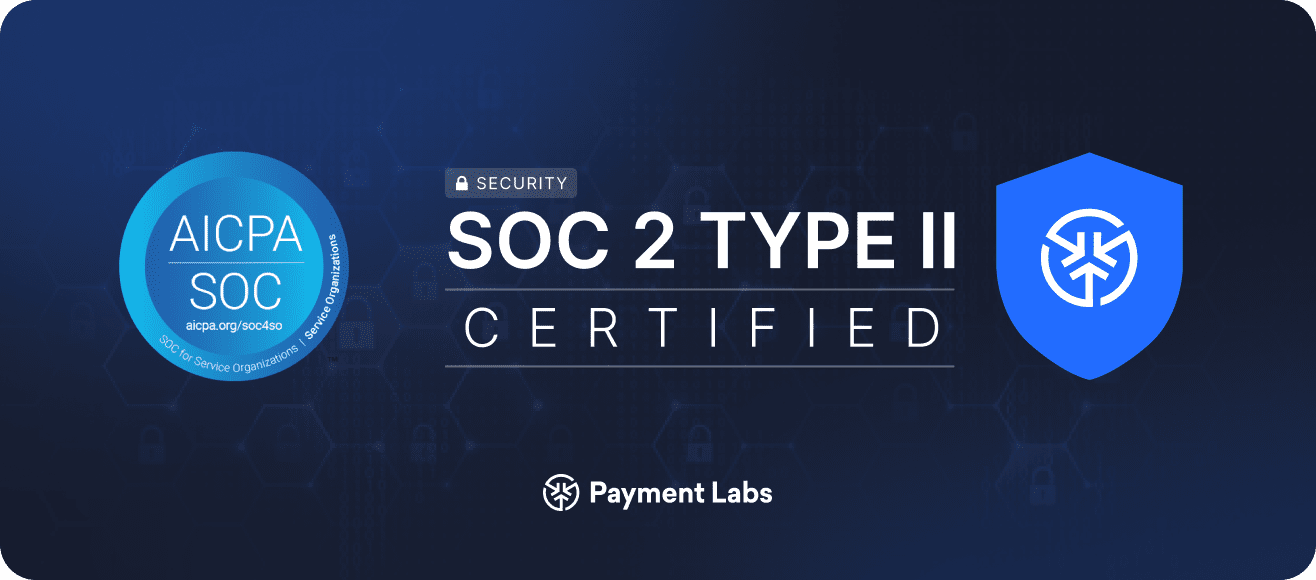What is a Payment Rail?
Oftentimes in banking, you will hear the phrase “payment rail,” and maybe you generally understand what it means in theory, but you may still have questions.

Oftentimes in banking, you will hear the phrase “payment rail,” and maybe you generally understand what it means in theory, but you can’t explain exactly what it is. You know you use them to send money in a wide variety of situations, but you might have questions about how exactly these rails work. What is the difference between using a fintech platform like Payment Labs to send payments versus sending a wire through the bank?
In this article, we’ll break down different types of payment rails and explain how Payment Labs uses different payment rails to make sure every payment is fast and cost-effective, saving you time, effort, and reducing your overall costs.
What is a Payment Rail?
A payment rail refers to the infrastructure or network that facilitates the transfer of funds between individuals, businesses, banks, and financial institutions. It serves as the underlying system that enables the movement of money electronically. Payment rails play a crucial role in the modern financial ecosystem, ensuring the secure and efficient transfer of funds.
Payment rails are like air travel in the sense that payment rails are the invisible highways that swiftly and securely move money from one place to another in the financial world, just like how air travel involves an invisible network of routes, airports, and airlines that allow people and goods to travel across the globe. Making a payment using a payment rail is like booking a flight: you provide the necessary information, and the payment rail ensures that your funds safely reach the intended destination.
Businesses can use payment rails in several ways:
- Payment Processing: Payment rails are essential for businesses to accept various forms of customer payments, including credit cards, debit cards, digital wallets, and bank transfers. They enable the processing of transactions, allowing customers to make payments for goods and services.
- Payroll and Employee Payments: Companies use payment rails to electronically distribute salaries and wages to their employees. This streamlines the payroll process, reduces administrative costs, and ensures timely payments.
- Supplier Payments: Businesses can use payment rails to make payments to their suppliers and vendors. This is often done through methods like Automated Clearing House (ACH) transfers or wire transfers, depending on the transaction size and urgency.
- E-commerce Transactions: Online retailers rely on payment rails to facilitate secure and efficient transactions on their websites. Payment gateways and processors integrate with these rails to enable seamless online shopping experiences.
- Cross-Border Transactions: International businesses use payment rails to conduct cross-border transactions, facilitating the transfer of funds between different countries and currencies. This involves currency conversion and compliance with international financial regulations.
- Subscription and Recurring Payments: Many businesses, especially those offering subscription-based services, use payment rails to set up automated recurring payments. This ensures a steady and predictable cash flow.
- Peer-to-Peer Payments: Payment rails also support person-to-person (P2P) transactions, allowing individuals and businesses to transfer money between themselves. This is commonly used for splitting bills, sharing expenses, and making informal payments.
In summary, payment rails are the backbone of the modern financial system, enabling businesses to send and receive funds securely and efficiently. They are integral to various aspects of business operations, from payment processing to international trade, making them a fundamental component of the global economy.
Types of Payment Rails
ACH (Automated Clearing House)
An ACH transfer is an electronic funds transfer system in the United States that facilitates money movement between bank accounts. It’s commonly used for various financial transactions, such as direct deposits, bill payments, and business-to-business payments.
ACH transfers are known for their cost-effectiveness and efficiency, making them a popular choice for businesses and individuals for various financial transactions. While ACH transfers are widely used in the United States, similar electronic funds transfer systems, such as SEPA (Single Euro Payments Area) in Europe, EFT (Electronic Funds Transfer) in Canada, and Clearing House Automated Payments System (CHAPS) in the UK, exist in other countries, each with its own set of rules and regulations.
Credit and Debit Cards
Credit and debit cards can be considered as payment rails because they provide the infrastructure and mechanisms for transferring funds between a cardholder’s account and a merchant’s account during a purchase or transaction. These card rails enable the smooth flow of funds electronically and are integral to modern payment systems.
Credit and debit cards serve as payment rails that enable the seamless transfer of funds between cardholders and merchants. These rails are supported by card networks, financial institutions, and payment processors, ensuring secure, efficient, and standardized transactions for a wide range of purchases and payments.
Wire Transfer
A wire transfer is a method of electronically transferring funds from one bank or financial institution to another. It’s commonly used for large transactions, international transfers, and when a high level of security and speed is required.
Wire transfers are known for their reliability and are commonly used for high-value transactions, such as buying real estate, paying suppliers or vendors in international trade, or transferring funds between different financial institutions. However, they are often associated with higher fees compared to other payment methods.
RTP (Real Time Payments)
RTP refers to a payment system and infrastructure that allows for immediate and instantaneous transfer of funds between parties, typically within seconds. RTP systems have gained popularity for their speed, efficiency, and availability, making them a significant advancement in the world of electronic payments.
It’s worth noting that RTP systems may differ from country to country, such as the Pix instant payment method in Brazil, the Single Euro Payments Area Instant Credit Transfer (SEPA ICT) in the EU, and the Unified Payments Interface (UPI) in India, and various financial institutions and payment service providers may offer their own RTP solutions or participate in a national or regional RTP network. These systems are designed to complement or replace traditional payment methods like checks and net settlement transfers, offering greater convenience and efficiency in the digital age.
Cryptocurrency
Cryptocurrency and blockchain act as a digital payment rail. Cryptocurrency, like Bitcoin, is a digital asset. When someone wants to make a payment, they create a digital wallet, specify the recipient’s wallet address, and broadcast the transaction.
Miners or validators verify and add the transaction to the blockchain, forming a secure and transparent ledger. Once confirmed, the recipient can access the cryptocurrency. This system eliminates intermediaries, offers transparency, and relies on cryptography for security, making it a decentralized and efficient payment method.
Cryptocurrency and blockchain technology can be considered a form of payment rail, offering a decentralized and secure way to transfer digital assets between parties.
Cryptocurrency and blockchain technology function as a payment rail by allowing individuals and businesses to transfer digital assets securely and directly to one another, without the need for intermediaries like banks. The blockchain serves as a public ledger, ensuring transparency and trust in the system, while the cryptocurrency itself represents the value being transferred. This decentralized and digital nature of cryptocurrency and blockchain technology has the potential to revolutionize the world of payments and financial transactions.
FedNow
FedNow is a real-time payment system in the United States operated by the Federal Reserve. It is designed to facilitate instant and electronic funds transfers between banks and financial institutions.
Key features and benefits of FedNow include:
- Real-Time Transactions: FedNow allows for immediate and near-instantaneous funds transfers, making it suitable for time-sensitive payments.
- Availability: The system operates, including weekends and holidays, ensuring continuous access to payment services.
- Enhanced Accessibility: FedNow is designed to provide access to financial institutions of all sizes, promoting inclusivity in the real-time payment space.
- Secure and Regulated: As an initiative of the Federal Reserve, FedNow is subject to strict security and regulatory standards, enhancing trust and confidence in the system.
- Interoperability: The goal is to make FedNow interoperable with other payment systems, promoting widespread adoption and connectivity.
FedNow aims to provide a modern and efficient payment infrastructure in the United States, reducing the reliance on traditional payment methods like checks and enabling individuals and businesses to conduct real-time electronic transactions seamlessly. It is part of a broader effort to advance the U.S. payment system into the digital age.
Why Choose Payment Labs?
A multi-rail strategy will save you time and effort when making B2C payments. Payment Labs uses dynamic payment rails to simplify your multi-rail payment strategy, reducing friction and labor for your accounting team.
Trusting a fully compliant fintech platform like Payment Labs greatly benefits SMBs seeking to pay individuals in a number of ways, including:
Cost Efficiency: Payment Labs enables SMBs to optimize costs by automatically selecting the most cost-effective payment method for each transaction. This helps reduce fees and lowers the overall cost of making payments.
Speed and Efficiency: Payment Labs leverages dynamic payment rails to ensure faster payment processing. This leads to quicker disbursal of funds to recipients, improving customer satisfaction and cash flow management.
Payment Choice: Different individuals may prefer various payment methods, such as bank transfers, digital wallets. Our platform allows SMBs to accommodate these preferences, enhancing customer convenience.
Risk Mitigation: Payment Labs is equipped with risk assessment tools that help identify potential fraudulent transactions or compliance issues. This helps SMBs maintain security and regulatory compliance while making payments.
Global Reach: Our solution offers access to a wide range of payment networks, including international options. This allows SMBs to expand their customer base globally and make cross-border payments efficiently.
Automation: Payment Labs automates payment processes, reducing the need for manual intervention. This frees up SMB resources and time, allowing them to focus on core business activities.
Scalability: As an SMB grows, our platform can easily scale with it, accommodating an increasing volume of payments without significant disruptions.
Compliance Assurance: Payment Labs integrates compliance checks and regulatory requirements into the payment process, reducing the risk of non-compliance and associated penalties.
Customer Experience: Efficient, secure, and varied payment options enhance the overall customer experience, leading to customer loyalty and repeat business.
Leveraging dynamic payment rails through a fintech platform like Payment Labs can significantly benefit SMBs by streamlining their B2C payments. It lets you focus on your core business activities while benefiting from cost savings, enhanced efficiency, risk mitigation, and improved customer satisfaction. Additionally, our solution provides a single access point to multiple payment methods, making it easier for SMBs to manage their payment processes effectively and stay competitive in the market.




